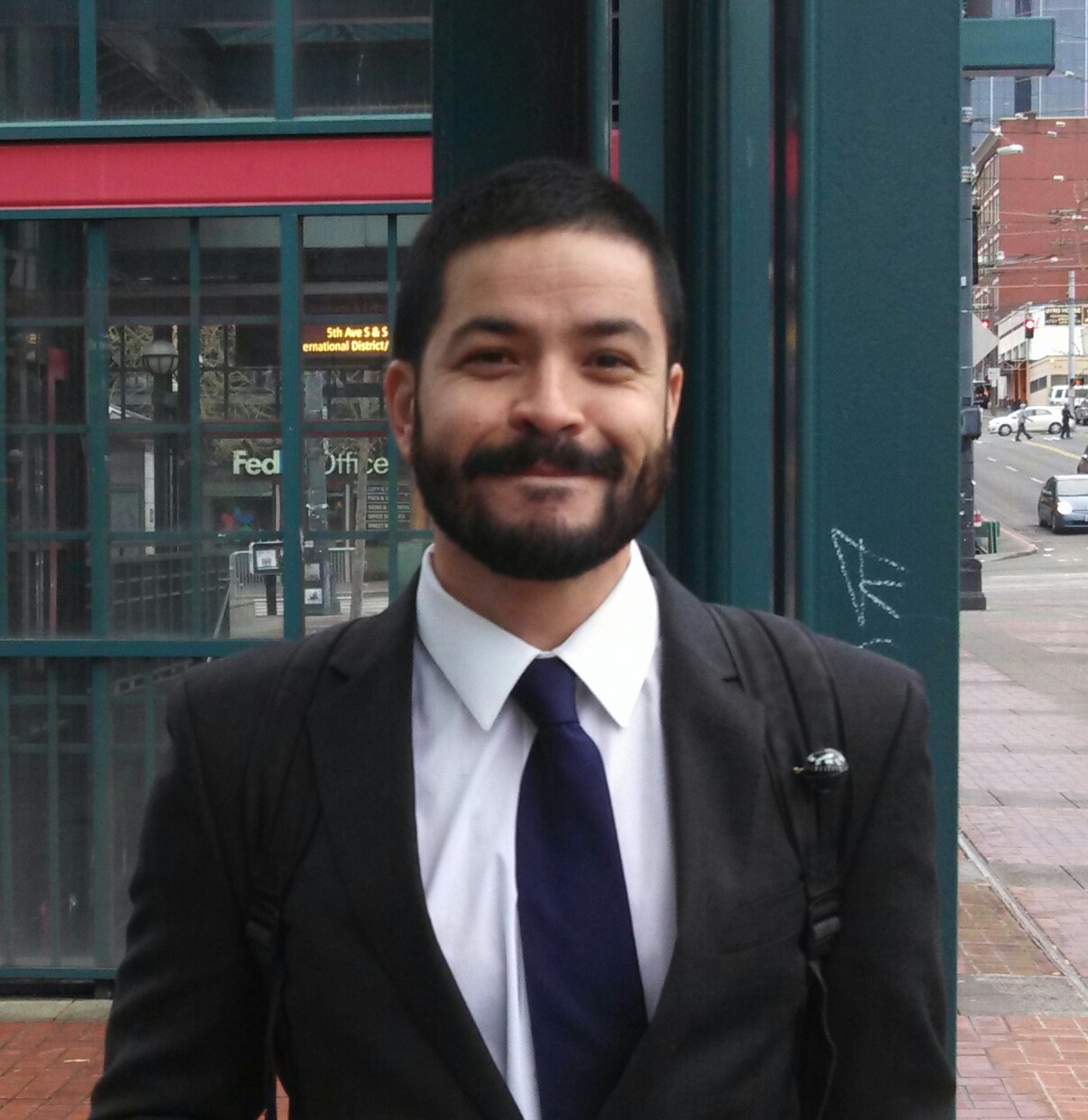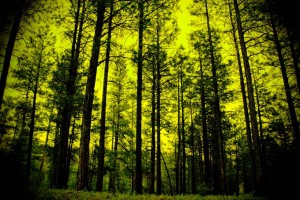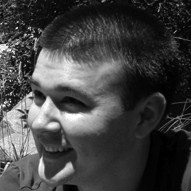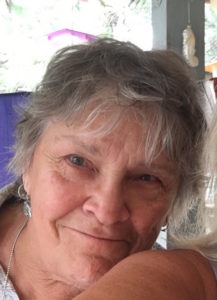 Solstice light silvers and goes gray. The air is heavy with the scent of a desert river. My friend and I carry some of her partner’s ashes down a rocky slope to the Verde River in Central Arizona – more accurately, we brace and skitter our way to what we hope is the shoreline. We want to give part of him back to the river he loved so much.
Solstice light silvers and goes gray. The air is heavy with the scent of a desert river. My friend and I carry some of her partner’s ashes down a rocky slope to the Verde River in Central Arizona – more accurately, we brace and skitter our way to what we hope is the shoreline. We want to give part of him back to the river he loved so much.
A soft rain begins to fall. What might have been shoreline is muck. There is no way to get to the water. “No good,” she says. “Let’s go back up to the bridge in Camp Verde.” We start up the sandstone we’ve just descended. It’s now nearly dark. I’d thought this would be an easy crossing to the river and hadn’t brought my hiking poles. My friend grabs my arm. I step up on a shallow ledge and feel my foot sliding in mud. My friend holds my arm tight, but it’s no help. There is nowhere to regain balance. I crash down on my left knee. I manage to turn on my back. The pain is a nauseating jolt. The world has become a movie.
Two hours later, a kindly Emergency doc with worried eyes says, “I’d hoped it was just a bad bruise. I’m sorry. It’s broken in three places. We’ll have to keep you here and you’ll need surgery.”
“But it doesn’t hurt unless I move it,” I say. “I don’t want surgery.” I don’t tell him that I’m terrified of general anesthesia. I’d had it twice when I was a kid and the memory of the cold, dark, pain-filled galaxy I’d found myself in has never left me.
“You don’t really have a choice,” he says. “If you want to walk again…”
I write here two weeks later. There are metal staples closing the eight inch incision in my leg, and two metal pins and a cable in my knee. I’ll be on a walker for at least four more weeks. No driving. I live alone. There is no room for error. If I drop something, I have to use a mechanical reaching tool. If I hobble from one room to another and forget something, I suspect the neighbors can hear me cursing out Fate and Whatever Dolt Runs the Universe. And – I have learned what it means to be a real friend in a real community.
I grew up in a little farming town on the shores of Lake Ontario. We had a party-line phone with a live operator. Almost all neighbor/human contact was face to face. I escaped a sometimes terrifying home by exploring the hills and creeks around the town – and hiding out in the tiny local library.
Forty years later, I moved to another little town – in Northern Arizona to write and fight for the earth. My best friend lived across the street. I hung out with hard-core enviros – think Earth First!, river runners, climbers, social activists, artists, writers and scruffy freaks. We all took care of each other through break-ups, deaths, injuries and arrests. There were 11,000 students at the local university. There was no internet. There were no smart phones. There were only land-lines and the Freak Telegraph. And there was my journal and me being faithful to the words I serve.
Then the Southwest became the place to be: to find yourself, to be wannabes, to open charming little coffee shop after charming little coffee shop, to invest, invest, invest and cover the desert and forest with acres of red-roofed houses and trophy mansions. Flagstaff’s population has grown by 189%. There are 25,000 students at the university. Every six minutes a trendy hipster restaurant opens. My friends and I avoid what was once a genuine Southwestern downtown with old-time diners (not cute replicas), bars with boards across their windows, trading posts and local bookstores. Even though the coffee at Macy’s Café is still killer, it’s just not worth the drive in bumper-to-bumper traffic or the fight to the death for a parking place. More and more, most of us connect by text, email and social media.
As soon as word got out about the fall and the surgery, friends showed up at the hospital. Roxane took my mud/blood- filthy clothes and washed them. Larry brought a stuffed animal raccoon to keep watch. Christina sat with me and told me what I could expect in the weeks of recovery to come. She’d had knee surgeries and her empathy and practical advice carried me through more than a few rough hours. She drove me home in a white-out snowstorm and stayed the night to guide me with the basics of the walker and the dangers of moving spontaneously.
My local neighbors, Jim and Dawn, showed up the next day and continued to show up every day. They emptied cat litter, fed the four cats, lay down plywood in front of my desk so I could easily roll my desk chair. When intestinal flu struck on my third day home, they got me through all that involved. Roxane helped me wash my hair. Diane and Bob drove a Trader Joe’s run and filled my cupboards and freezer. Margaret called from Reno and offered to come down to help. Vickie and Kit brought a case of cat food; Kelly, Rajean, my radio producer Gillian, William, Karla and Ann all called and said the magic words: “What do you need?” They didn’t put me in their prayers. They didn’t send some vague amorphous healing energy. They asked, “What do you need?” and they showed up – In three-dimensional, all five senses physical reality.
A few days ago I found myself feeling happier and safer than I have in a long time. I was hauling myself up from my desk chair, telling the walker to stay steady and getting ready to hobble to the kitchen. I sat back down and looked out the living-room window to the snow lying thick on the Ponderosa branches. The late afternoon shadows had gone long and blue. A soft winter sun cast shadows on the trailer next door. For an instant, I imagined that I was back in the wallboard and scrap lumber cabin I had lived in when I first moved to Flagstaff. There would have been only a land-line phone, a few neighbors in the shacks around me and my clan scattered through the little mountain town. I would have felt that I was in the heart of a community – and I understand that the hardest fall I’d ever taken had landed me back in that heart.
I turned to the computer and wrote a message to my friends and neighbors: I write in my journal – not about morning light soft on fresh snow or cat prints threading across the yard or deep spiritual insights gained from it taking five minutes to hobble from my room to the kitchen because of a broken kneecap. I write about impatience; forcing myself to stop thinking I’m being punished for something; living with (to put it delicately) stomach troubles when I can’t move fast enough. I write about using a commode, wearing adult diapers, feeling steadily embarrassed by all of it. I write about how grateful I am that I am not using. And I write about the physicality of physical community, physical love.
A kneecap is physical. Fractures are physical. Stomach flu is physical. These days in my life are not hypothetical or etheric or possibly even transformative. I don’t need thoughts sent to my knee or good wishes sent to my bowels. I need precisely what I’m being given: tender, ungrudging care given by tender, ungrudging friends. I won’t name them because every one of them would say, “I’m just doing what friends can do for each other.” I can tell you that they have helped me give Spokescat Ruti, the Red his twice-daily pills (without which, he would die); they have washed my clothes, stayed overnight with me and listened each time I’m sure a fatal development has occurred. They have made me laugh and are teaching me how to re-enter a community I thought I had lost. But more than anything, they steadfastly remind me that I’m not as alone as I too often tell myself.
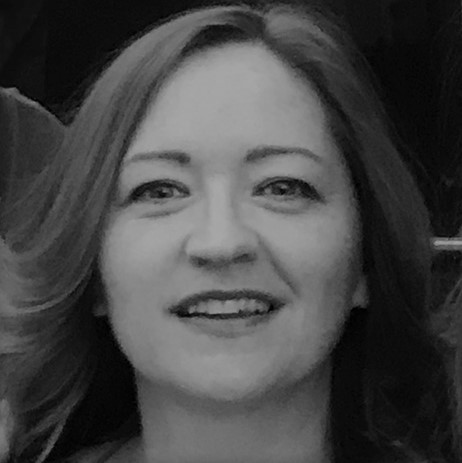
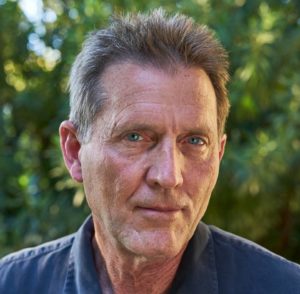 The Scottsdale Museum of Contemporary Art is excited to host photographer Mark Klett for their Artist Talk on Thursday, October 26th from 7pm to 8:30pm. Klett will discuss how working in the specific desert landscape of the Southwest has influenced his practice. The event is free, and seating is first come, first serve. The event will take place at the museum (7374 E 2nd St, Scottsdale, AZ 85251).
The Scottsdale Museum of Contemporary Art is excited to host photographer Mark Klett for their Artist Talk on Thursday, October 26th from 7pm to 8:30pm. Klett will discuss how working in the specific desert landscape of the Southwest has influenced his practice. The event is free, and seating is first come, first serve. The event will take place at the museum (7374 E 2nd St, Scottsdale, AZ 85251). Royse Contemporary is so excited to present the joint exhibition of Arizona artists Alexandra Bowers and Cherie Buck-Hutchison, opening on Thursday, October 5. The exhibit will showcase Bowers’ intricate wood burnings of Sonoran desert flora and fauna and Buck-Hutchison’s digitally composited photography reflecting upon the southwest landscape.
Royse Contemporary is so excited to present the joint exhibition of Arizona artists Alexandra Bowers and Cherie Buck-Hutchison, opening on Thursday, October 5. The exhibit will showcase Bowers’ intricate wood burnings of Sonoran desert flora and fauna and Buck-Hutchison’s digitally composited photography reflecting upon the southwest landscape. Solstice light silvers and goes gray. The air is heavy with the scent of a desert river. My friend and I carry some of her partner’s ashes down a rocky slope to the Verde River in Central Arizona – more accurately, we brace and skitter our way to what we hope is the shoreline. We want to give part of him back to the river he loved so much.
Solstice light silvers and goes gray. The air is heavy with the scent of a desert river. My friend and I carry some of her partner’s ashes down a rocky slope to the Verde River in Central Arizona – more accurately, we brace and skitter our way to what we hope is the shoreline. We want to give part of him back to the river he loved so much.